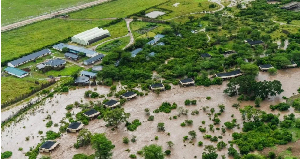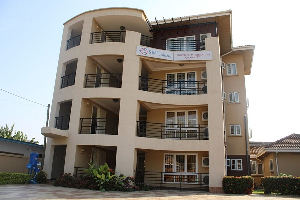Regional News of Monday, 29 April 2019
Source: ghananewsagency.org
Dozens of UW farmers benefit from improved groundnut seeds
A total of 61 communities in six districts of the Upper West Region have benefited from new variety of groundnut seeds introduced to farmers by International Crop Research Institute for the Semi-Arid Tropics (ICRISAT).
The varieties, which agricultural scientists describe as high yielding potentials and resistant to aflatoxins include Nkatiesari, which has 110 days of maturity level and yield potential of 2.2 tonnes per hectares.
The rest are Samnut22 with 115 to 120 days maturity and Yenyawoso, 85 to 90 days of maturity level and yield potential of 2.0 tonnes per hectares.
The selected six districts and Municipals includes Wa Municipal, Wa West, Wa East, Sissala West, Sissala East Municipal, and Jirapa Municipal.
Mr Kwasi Wih, the Deputy Upper West Regional Director of Department of Food and Agriculture, said the ICRISAT groundnut upscaling project aimed at increasing groundnut productivity of smallholder farmers.
The project is being funded by the United States Agency for International Development (USAID) through its Feed the Future Agriculture Technology Transfer (ATT) project.
It seeks to increase groundnut production and productivity of smallholder farmers and improve their income, nutrition and health status.
Mr Wih added that the project objectives were to enhance farmers’ knowledge on improved groundnut production technologies and complementary crop management practices.
He said that it is also to enhance seed production and marketing and boost farmers’ knowledge on aflatoxin management as well as access to small scale processing technologies.
Emmanuel Sasu Yeboah, the Upper West Regional Director of Agriculture, said the Region has a huge number of groundnut farmers who could use the opportunity of the new varieties to improve their standards of living.
He said the land was very fertile for groundnut production and commended smallholder farmers for promoting the new improved varieties.
Professor Paul B. Tanzubil, Country Project Manager of ICRISAT, said aflatoxins found on agricultural crops such as maize (corn) and groundnuts were dangerous to consumers’ healthy.
"Aflatoxins are Aspergillus flavus and Aspergillus parasiticus, which are abundant in warm and humid regions and can contaminate crops in the field, at harvest, and during storage," he said. People can be exposed to aflatoxins by eating contaminated crops such as maize and groundnuts.
He cautioned farmers and other agricultural value chain workers, especially those in groundnut paste and oil business to separate contaminated seeds from the good ones before processing.
People exposed to aflatoxins are reported to have increased risk of liver cancer and other deadly diseases that could lead to death.











